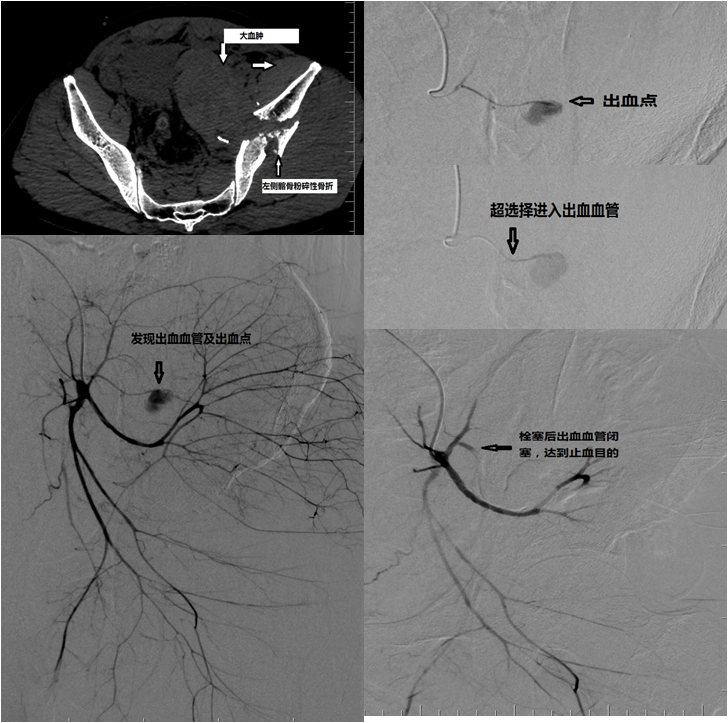- Date:2023-09-01
- Click:4659Times
After fully communicating with the patient's family, the interventional emergency team was quickly activated. Members of the interventional team, including attending physician Xiao Jitao, nurse practitioner Wang Yanzhe, nurse practitioner Yang Yuewu, and technician Yang Fan, quickly rushed to the hospital and arrived at the interventional diagnosis and treatment room. Under the supervision of Dr. Zhang Hongliang from the Department of Critical Care Medicine, the patient underwent interventional surgery immediately. During the operation, DSA technology was used to precisely locate the injured vessel, confirm the cause of the formation of the huge hematoma in the abdominopelvic cavity, and use microcatheter ultra-selective to accurately locate the bleeding vessel. The medical staff quickly gave embolization treatment to the bleeding vessel and occluded the responsible vessel to stop bleeding. After 40 minutes of observation, another DSA angiogram was performed to determine the patient's vascular condition, and no contrast spillage was observed. At this time, the patient's basic vital signs such as blood pressure, heart rate, oxygen saturation gradually improved, the patient's mood tended to stabilize, yellow urine was discharged from the urethral cannula, and he safely returned to the intensive care unit for further treatment.

"In layman's terms, the interventional technique we use utilizes a puncture needle to 'puncture' an opening in the human femoral artery, and sends a specific catheter along the blood vessels to various parts of the human body using this puncture opening, and through the injection of contrasting agents, angiography is performed to find the cause of the bleeding, and a special Embolic agent to precisely block the bleeding blood vessel's fissure, so as to achieve the purpose of stopping bleeding." Xiao Jitao, attending physician, percutaneous arterial intervention DSA angiography + selective arterial embolization is a highly effective means of treating hemorrhage caused by pelvic fracture, which can accurately locate the bleeding blood vessels, but also at the same time to carry out effective hemostatic treatment, minimally invasive interventional therapy is also applicable to other parts of the human body trauma or tumors resulting in vascular injuries caused by hemorrhage treatment.



 鲁ICP备11009722号-4
鲁ICP备11009722号-4 